The Battles of Lexington and Concord were the first battles of the Revolutionary War.
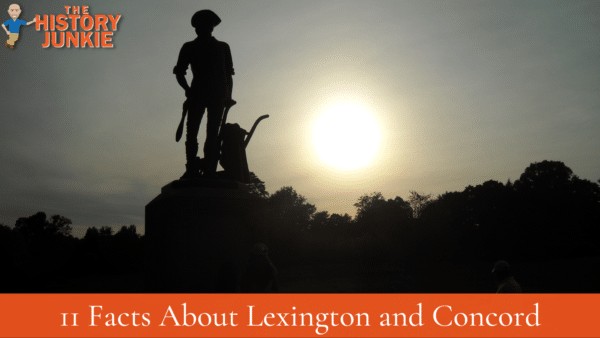
What is fascinating about these two battles is how hopeless the British offensive was. The Minute Men had created a sophisticated alarm system and had the ability to muster many militias at a moment's notice.
Jump to:
- #1. Thomas Gage Knew He Was Outnumbered
- #2. Margaret Gage Was a Possible Spy
- #3. Paul Revere Was The Trigger Man
- #4. Samuel Adams and John Hancock Were Almost Captured
- #5. Captain John Parker Led The Men At Lexington
- #6. Concord Was Prepared
- #7. The Militia Harassed the British At Meriam's Corner
- #8. Hardy's Hill Hammered The Exhausted British
- #9. The Bloody Angle Lives Up To Its Name
- #10. John Parker Gets His Revenge
- #11. Lord Percy Saved The British
The British barely escaped complete destruction.
Here are 11 facts about Lexington and Concord. These facts will teach you the major points of the battle as well as introduce you to important players of the Boston Campaign.
#1. Thomas Gage Knew He Was Outnumbered
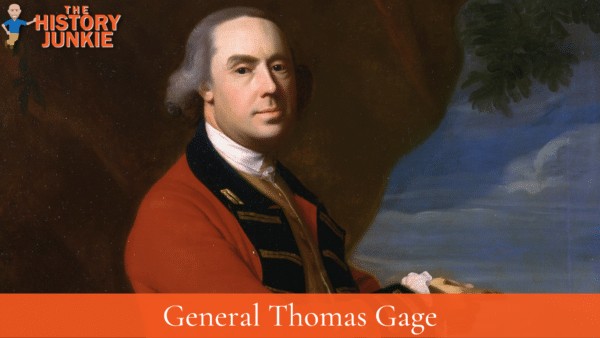
Months prior to the March to Concord, there was a false alarm known as the Powder Alarm. This resulted in engaging the minutemen, and the General was able to see a practice run of what Lexington and Concord would look like.
The minutemen quickly engaged and were prepared to take action.
At this point, the British had not sent Gage the reinforcements that he had requested. They did not take the rebel threat seriously and believed they could maintain order with what they had already sent to the New England Colonies.
The reality was that almost every able-bodied man throughout Middlesex Colony was involved in the militia and would greatly outnumber the British.
#2. Margaret Gage Was a Possible Spy
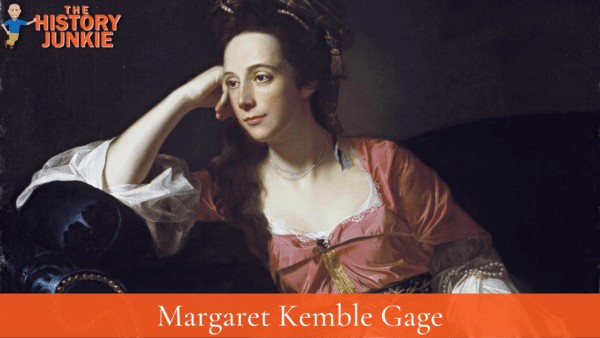
This is probably more myth than reality, but there are ties to Margaret Kemble Gage having rebel sympathies.
Movies have made the case of Margaret as a lover to Joseph Warren; this is not true, but Joseph Warren did find out about Gage's plans much earlier than anticipated. In order to know the mission, most believe he had to have access to someone in the inner circle, so she becomes the obvious possibility.
Margaret returned to England in 1776 and was followed by her husband shortly after when he was recalled. The two had eleven children, and many of those children would become influential members of English society.
#3. Paul Revere Was The Trigger Man
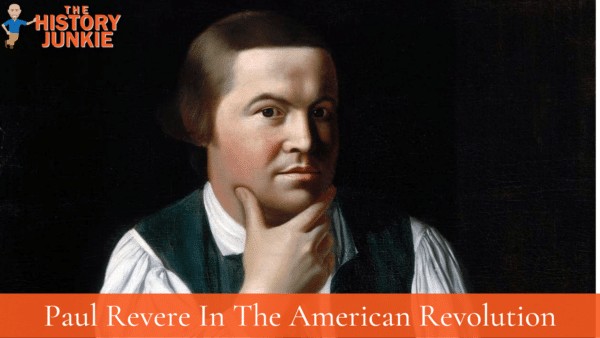
The poem The Midnight Ride of Paul Revere does not show how much of an impact Paul Revere had at Lexington and Concord. The poem was written as propaganda and made him seem like a superhero who galloped through the Middlesex countryside, alarming all the patriots that "The British Are Coming!"
The reality is that most of the poem was a myth. It leaves out the contribution of William Dawes, Samuel Prescott, and the other 40 riders that night. It does not mention that Revere was captured by the British. Worst of all, it portrays an unorganized group of militia.
The alarm system was sophisticated, and Paul Revere triggered various riders, who then triggered other riders. These riders alarmed each town, and by the time the British arrived at Lexington, they were faced with Captain John Parker and his men.
While standing on the Lexington Green, the alarms were still going out, and by the time the British began their retreat from Concord, they were under heavy fire.
This occurred because Revere was entrenched in the Sons of Liberty and other patriot organizations. He knew who to talk to in each town to trigger the alarm.
While Boston was a hotbed of resistance, there were still loyalists, and British sentries were on patrol. He would have never said, "The British Are Coming!"
#4. Samuel Adams and John Hancock Were Almost Captured
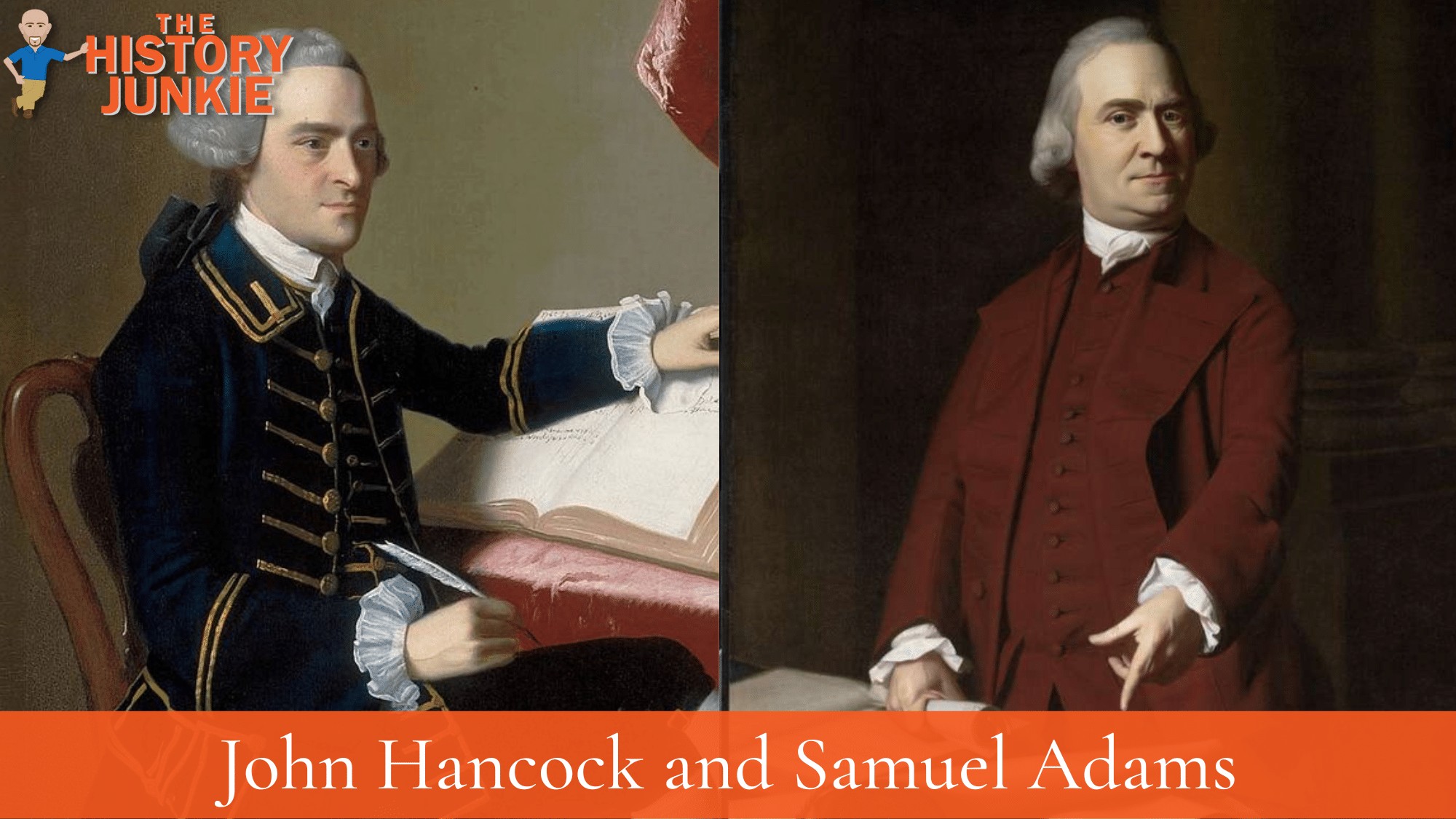
The main objective of the British Army was to confiscate the gunpowder stores that were being held in Concord, but a secondary objective would be to capture Samuel Adams and John Hancock.
The two men were influential members and leaders of the Sons of Liberty. It was known that John Hancock was the purse while Samuel Adams was the voice.
When the British began their march, Warren alerted Revere and Dawes of the British plans. He knew that Adams and Hancock were in Lexington and sent Revere and Dawes separate paths to alarm them.
Both made it to the rebel leaders and convinced them to leave the area. The two left just in time as shortly after Paul Revere was captured, William Dawes lost his horse, and the newly recruited Samuel Prescott rode to Concord.
#5. Captain John Parker Led The Men At Lexington
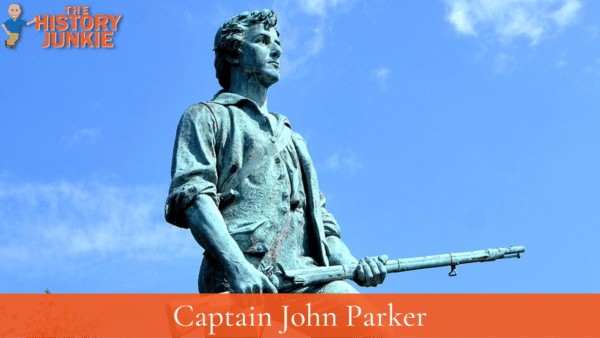
When the British arrived at Lexington, John Parker had his men to the side of the road in a parade formation. He had them in that position to give himself a couple of options.
He could stand his ground or fade away and monitor the British from a distance.
This all changed when someone fired a shot, which resulted in the British firing off a volley that killed 8 minutemen.
It is unknown who fired the first shot, but it was most likely the British. It seemed as if John Parker and his men were going to let them pass, but Major John Pitcairn kept giving conflicting orders, and the British were disorganized as it would take Francis Smith coming up to pull them back and reorganize them.
The battle had begun.
#6. Concord Was Prepared
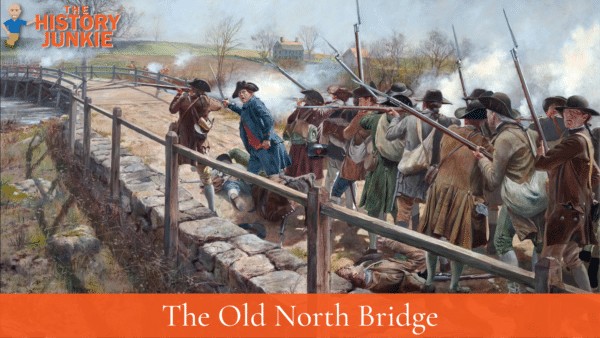
By the time the British made it to Concord, the provincials were prepared.
Captain Isaac Watts had activated his sharpshooters, and James Barrett was in command of those still filing into the ranks.
At this point, the British were outnumbered, and their inexperience began to show. Despite killing Isaac Watts, the soldiers often fired high and left them vulnerable to follow-up volleys.
They were pushed back and forced to retreat but were facing annihilation unless reinforcements showed up. The reinforcements came, and Francis Smith began his retreat back to Boston.
#7. The Militia Harassed the British At Meriam's Corner
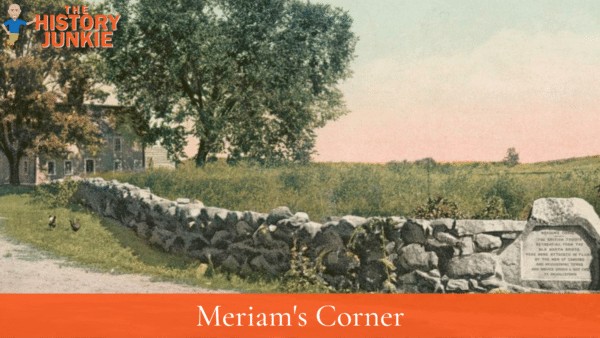
Smith and his column moved quickly from Concord and made it to a point known as Meriam's Corner. Meriam's Corner is located by the house of Josiah Meriam and gave the provincials thick brush to hide.
This would be one of the first instances of guerilla tactics that the provincials and colonial militia would use throughout the war to frustrate the British.
British volleys were highly effective in open ground and would cause many of the militia to run in fear, but here, the provincials did no such thing. They fired behind stone walls and thick brush and used a house for cover. All the while dropping back and exhausting Colonel Smith's flanking units.
Smith pushed his men through the gauntlet while his left flank took heavy fire. These quick movements allowed him to rush past Meriam's Corner but also exhausted his flanking units, which were beginning to lag.
Once past Meriam's Corner, the British officers believed that they had managed to push through the militia that had surrounded them. This idea was proved false when they reached Hardy's Hill.
#8. Hardy's Hill Hammered The Exhausted British
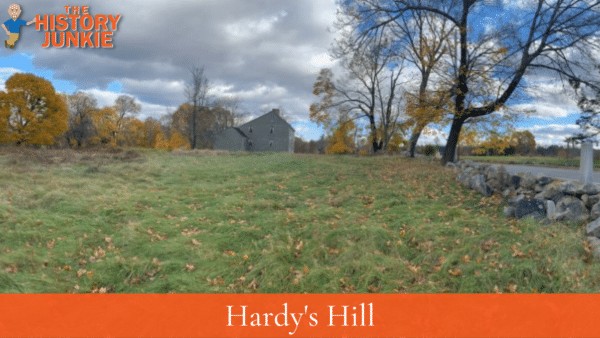
Hardy's Hill was located right next to Concord Road and gave the provincials the advantage of elevation and cover. It would be here that the British could come under a heavy volley of 215 militia and minutemen from Framingham and Sudbury.
To make matters worse for the British, their left flank was still under heavy fire at Meriam's corner. Smith sent out another flanking unit to try and dislodge the provincials but only made them easier targets for minutemen snipers.
The men of Framingham and Sudbury were led by veterans of the French and Indian War and were quite comfortable with these guerrilla tactics. These tactics began to frustrate the British and caused chaos in the British ranks.
The provincials had effectively caught the British in a pincer attack and began to pour fire on them. Smith managed to regain control of his men and push them further down the road.
However, he did so at the expense of his flanking units. The provincials had successfully repelled them and come closer to the main British line.
#9. The Bloody Angle Lives Up To Its Name
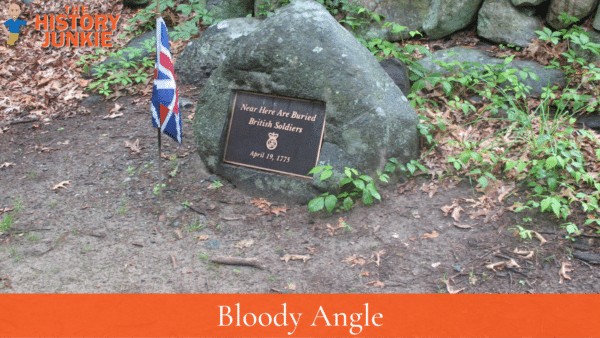
Smith pushed forward and was able to sustain his men without taking heavy losses, but his flanking units were growing tired. He continued to move down Lexington Road, which now dipped and crossed Elm Brook.
The right flank of his army was moving through thick brush along the side of the road. This made it difficult for the provincials to engage them with any type of success, but the topography would again prove difficult for Smith to manage.
Colonel Smith had little choice but to continue a curve in the road. Here, the provincials were again waiting for the Redcoats.
Major Baldwin and the Woburn militia had arrived earlier and witnessed the carnage at Lexington and arrived too late to help in repelling the British at Concord. Baldwin and his newly formed regiment witnessed the skirmish at Meriam's Corner and moved towards Lexington.
The Woburn men set up in an advantageous spot at a sharp angle on Lexington Road. He and his men took cover behind trees and waited for the oncoming British. The Redcoats came into view shortly after.
The men of Woburn opened up a blistering volley that ripped through the light infantry of the 5th regiment and what was left of the 4th. The British took heavy losses, and the barrage of fire killed approximately eight soldiers and wounded twenty others.
The initial volley pushed the British back, but the main column pushed them back through. Additional heavy fire came from the provincials as the British reorganized and began returning fire.
#10. John Parker Gets His Revenge
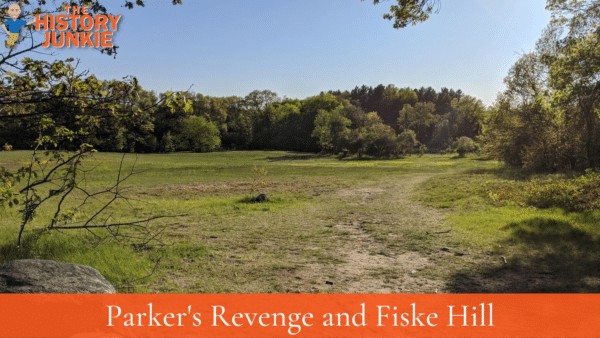
The British flanking units had been somewhat effective in repelling the provincials and keeping them a safe distance away from the main British column, but the day was long and hot, and they were exhausted.
The flanking units began to fall behind the main column, leaving it exposed. This presented the perfect opportunity for Parker and his Lexington men to deliver a blistering volley into the Redcoats.
Parker waited patiently for the British to approach. His men remained concealed and in no danger of being engaged by flanking units that had fallen behind. He allowed Colonel Smith and Captain Parsons to come alongside his concealed location and then opened fire.
Colonel Smith was struck in the thigh and thrown from his horse, Captain Parsons was also struck, and many British soldiers fell. The British again reorganized and sent Grenadiers after the Lexington Minutemen.
This all took time, and they were constantly under fire from the men they had run from the field earlier that day. Major John Pitcairn led the charge to drive Parker from the hill, which he did, but not before Parker and his Lexington regiment inflicted much damage on the British.
Pitcairn successfully rallied his men and pushed the provincials back. He was able to relieve the main British column but had taken a lot of time to do it.
Now, the provincials that had fought at Meriam's Corner were in front of the main column again and supported by reinforcements waiting at Fiske Hill.
Pitcairn took heavy casualties for his effort but did manage to allow the British to regain their quick march. He had saved the British column from possible annihilation.
The British again faced another ambush at Fiske Hill, where the provincials delivered heavy fire. It seemed as if the British column was fading until the hopeful sight of reinforcements.
#11. Lord Percy Saved The British
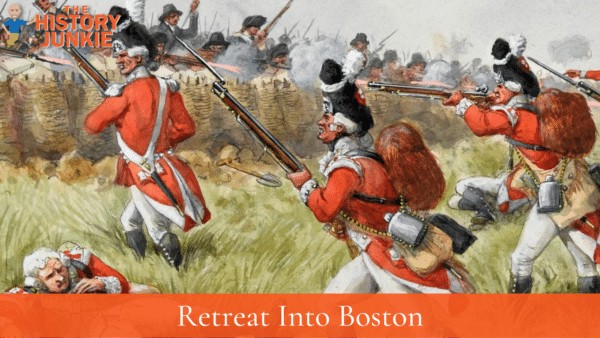
Lord Percy arrived with timely reinforcements and began to calmly march back to Boston. When entering the town of Menotomy, he told his men to check every house to avoid an ambush.
This would lead to an all-out brawl as regulars would come into contact with snipers in bedrooms and riflemen hiding behind houses. The British took heavy casualties, as did the colonists, but if he had not made that decision, his entire unit could have been trapped.
By the time the British arrived in Menotomy, there were 35 units of militia waiting for them. Percy knew he would take heavy casualties, but it was still the better option. He was able to get his men through the gauntlet and back to safety.
After the battle was over, the British knew they were outgunned and were now trapped within Boston, with only the Atlantic Ocean to save them. They would be forced to wait for help from England, which came and resulted in the Battle of Bunker Hill.
